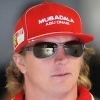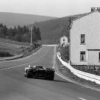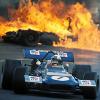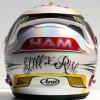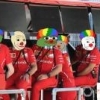2005 & 2006 Renault - how did they get competitive? [split]
#1
![2005 & 2006 Renault - how did they get competitive? [split]: post #1](https://forums.autosport.com/public/style_images/Theo/icon_share.png)
Posted 29 October 2012 - 12:51
I know they had Michelin and Mass Damper advantage. But can anyone tell me what the history was on how they got that point of being so competitive? Were there critical engineers that arrived around 2002 or so (ie similar to how Newey arrived at Red Bull in 2006, couple years prior to start of their winning ways) during that period and then left circa 2007?
Advertisement
#2
![2005 & 2006 Renault - how did they get competitive? [split]: post #2](https://forums.autosport.com/public/style_images/Theo/icon_share.png)
Posted 29 October 2012 - 14:07
In 2005 and 2006 Enstone built the best car in F1. Basically just as clearly the best car those seasons as the Red Bull is this season. Fisichella did about as well in those cars as Webber has does in the Red Bulls, for example.
I know they had Michelin and Mass Damper advantage. But can anyone tell me what the history was on how they got that point of being so competitive? Were there critical engineers that arrived around 2002 or so (ie similar to how Newey arrived at Red Bull in 2006, couple years prior to start of their winning ways) during that period and then left circa 2007?
They were hardly fastest in 2005. It was newey domination but Mercedes was a joke. Ferrari now is like renault of 2005
Ferrari was slightly faster in 2006 but Micheal had a Monaco meltdown and Ferrari didnt finish enough
#3
![2005 & 2006 Renault - how did they get competitive? [split]: post #3](https://forums.autosport.com/public/style_images/Theo/icon_share.png)
Posted 29 October 2012 - 14:11
In 2005 and 2006 Enstone built the best car in F1. Basically just as clearly the best car those seasons as the Red Bull is this season. Fisichella did about as well in those cars as Webber has does in the Red Bulls, for example.
I know they had Michelin and Mass Damper advantage. But can anyone tell me what the history was on how they got that point of being so competitive? Were there critical engineers that arrived around 2002 or so (ie similar to how Newey arrived at Red Bull in 2006, couple years prior to start of their winning ways) during that period and then left circa 2007?
I hate to break it to you but Flavio Briatore arrived in 2000 and hired Alonso among others. Just as he arrived at the end of '80s to Benetton and hired Schumacher and other key people.
#4
![2005 & 2006 Renault - how did they get competitive? [split]: post #4](https://forums.autosport.com/public/style_images/Theo/icon_share.png)
Posted 29 October 2012 - 14:15
I know they had Michelin and Mass Damper advantage. But can anyone tell me what the history was on how they got that point of being so competitive? Were there critical engineers that arrived around 2002 or so (ie similar to how Newey arrived at Red Bull in 2006, couple years prior to start of their winning ways) during that period and then left circa 2007?
While I can't answer the question "how" or "why," as to then "when" - Enstone have been menacingly competitive since 03 and 04, being fringe podium contenders showing a lot of promise, even almost getting best of the rest constructor honors in 04 if only it weren't for the Trulli sabotage (although it must be noted that this was the season Mac and Williams shot themselves in the foot).
I agree that in 05 they had the best car but 06 was a case of equal best. 84/90 points in the first 9 races with the pendulum swinging back the other was in the second half of the season.
#5
![2005 & 2006 Renault - how did they get competitive? [split]: post #5](https://forums.autosport.com/public/style_images/Theo/icon_share.png)
Posted 29 October 2012 - 14:29
#6
![2005 & 2006 Renault - how did they get competitive? [split]: post #6](https://forums.autosport.com/public/style_images/Theo/icon_share.png)
Posted 29 October 2012 - 14:30
Grand Prix's most recent "manufacturer era" probably lasted the whole of the 2000s, and it's easy just to remember the hyper-spending of 2006-8. But from their re-entry into F1 up until their second world championship, Renault were big cheeses.
Edited by Risil, 29 October 2012 - 14:32.
#7
![2005 & 2006 Renault - how did they get competitive? [split]: post #7](https://forums.autosport.com/public/style_images/Theo/icon_share.png)
Posted 29 October 2012 - 14:32
#8
![2005 & 2006 Renault - how did they get competitive? [split]: post #8](https://forums.autosport.com/public/style_images/Theo/icon_share.png)
Posted 29 October 2012 - 14:50
In 2005 and 2006 Enstone built the best car in F1. Basically just as clearly the best car those seasons as the Red Bull is this season. Fisichella did about as well in those cars as Webber has does in the Red Bulls, for example.
I know they had Michelin and Mass Damper advantage. But can anyone tell me what the history was on how they got that point of being so competitive? Were there critical engineers that arrived around 2002 or so (ie similar to how Newey arrived at Red Bull in 2006, couple years prior to start of their winning ways) during that period and then left circa 2007?
Short version:
Since 01 they improved year over year. Started being abysmal in 01 then made a big step in the closing stages of the season. Solid performance in 02. Occasional poles and wins in 03 and 04 followed by the two WDC/WCC- seasons.
They obviously never got over the switch from Michelins to Bridgstones. Of course Alonso´s move to McLaren was also a factor, but as you can see in 2008 the team was not at the same level as in 05/06 anymore.
Edited by LiJu914, 29 October 2012 - 14:51.
#9
![2005 & 2006 Renault - how did they get competitive? [split]: post #9](https://forums.autosport.com/public/style_images/Theo/icon_share.png)
Posted 29 October 2012 - 16:01
This thread is not about 2012.
#10
![2005 & 2006 Renault - how did they get competitive? [split]: post #10](https://forums.autosport.com/public/style_images/Theo/icon_share.png)
Posted 29 October 2012 - 16:06
#11
![2005 & 2006 Renault - how did they get competitive? [split]: post #11](https://forums.autosport.com/public/style_images/Theo/icon_share.png)
Posted 29 October 2012 - 16:17
They obviously never got over the switch from Michelins to Bridgstones. Of course Alonso´s move to McLaren was also a factor, but as you can see in 2008 the team was not at the same level as in 05/06 anymore.
Actually they were quite strong at the end of 2008. They would've been title contenders in 2009 if it wasn't for the regulation changes.
#12
![2005 & 2006 Renault - how did they get competitive? [split]: post #12](https://forums.autosport.com/public/style_images/Theo/icon_share.png)
Posted 29 October 2012 - 16:22
#13
![2005 & 2006 Renault - how did they get competitive? [split]: post #13](https://forums.autosport.com/public/style_images/Theo/icon_share.png)
Posted 29 October 2012 - 16:23
They've only had slumps due to hiring the wrong people such as Nick Wirth and Piquet Jr. and when an irreplaceable advantage is taken away such as engines from '98 and Michelin tyres from '07.
They were hardly fastest in 2005. It was newey domination but Mercedes was a joke.
Not entirely accurate. McLaren didn't get their act together until Imola, by which point Alonso had two wins which became three when Kimi broke down. Alonso also dominated the Chinese finale when Renault had begun to get the best out of the mass dampers. Likewise Alonso would have won in Japan if he hadn't had to let Klien back past early in the race. From Imola to Brazil, McLaren had the quickest car but obviously as you say the reliability was a shambles.
Edited by Disgrace, 29 October 2012 - 16:27.
#14
![2005 & 2006 Renault - how did they get competitive? [split]: post #14](https://forums.autosport.com/public/style_images/Theo/icon_share.png)
Posted 29 October 2012 - 16:27
Alonso came of age and Michelin found their form after the FIA nerfed them in 03.
Actually they were quite strong at the end of 2008. They would've been title contenders in 2009 if it wasn't for the regulation changes.
That's about it.
#15
![2005 & 2006 Renault - how did they get competitive? [split]: post #15](https://forums.autosport.com/public/style_images/Theo/icon_share.png)
Posted 29 October 2012 - 16:30
#16
![2005 & 2006 Renault - how did they get competitive? [split]: post #16](https://forums.autosport.com/public/style_images/Theo/icon_share.png)
Posted 29 October 2012 - 16:40
Actually they were quite strong at the end of 2008. They would've been title contenders in 2009 if it wasn't for the regulation changes.
I doubt it.
Renault improved, but they weren´t class of the field at the end - the 2 wins were also achieved under "special circumstances"...
And i also don´t see, why a team build such a horrible car under the 2009-regs, when they allegedly had the capability to build a title contender under the old regulations. I know Ferrari and McL also started poor, but unlike Renault they improved significantly throughout the season - and the team with the best car (out of all which didn´t start with the "diffuser-trick" on their cars) is the same team, which has still the best car right now.
#17
![2005 & 2006 Renault - how did they get competitive? [split]: post #17](https://forums.autosport.com/public/style_images/Theo/icon_share.png)
Posted 29 October 2012 - 16:49
#18
![2005 & 2006 Renault - how did they get competitive? [split]: post #18](https://forums.autosport.com/public/style_images/Theo/icon_share.png)
Posted 29 October 2012 - 16:53
One win was achieved via cheating, but there was nothing dishonest about the second. Even Piquet finished fourth (despite going off at one point) at Fuji. Renault's development in '08 was excellent even without the cheating.
What i meant with "special" regarding Fuji, was the Hamilton/Massa-clash including the penalties. Doesn´t mean that the win was undeserved, but it wasn´t a result of a speed advantage from Alonso/Renault.
Ok thinking it over a Hamilton vs. Massa drama is not really special but more of classic.;)
Edited by LiJu914, 29 October 2012 - 16:56.
#19
![2005 & 2006 Renault - how did they get competitive? [split]: post #19](https://forums.autosport.com/public/style_images/Theo/icon_share.png)
Posted 29 October 2012 - 17:03
I remember also there were hints about Michelin using the Renault F1 team as a "lab" for suspension development so it would probably go even further than the claimed special Bridgestones for Schumacher. And even if the team did well ( incl. or exc. Crashgate... ) in 2008, it was not to compare with the performance in 2005-6.
I remember that too. After the season was over, the Michelin Teams had their first test with the Bridgestone tyres.
Most of the teams were slightly slower (some tenth), one team even went faster (I think it was McLaren) and on one car, the Renault, the tyres didn't work at all.
It was said, that the suspension of Renault was so much optimized on the Michelin tyres, that it didn't work with Bridgestones.
Edited by ThomFi, 29 October 2012 - 17:04.
Advertisement
#20
![2005 & 2006 Renault - how did they get competitive? [split]: post #20](https://forums.autosport.com/public/style_images/Theo/icon_share.png)
Posted 29 October 2012 - 17:07
And you're thinking "yeah yeah, you and BAR". But...
The McLaren probably was the better car in 05 but it was very brittle(that or the engines, it's hard to tell the difference sometimes even when it looks like engine is to blame) and it wasn't like the Renault wasn't competitive. It was still very good. Better than a BMW Williams and way ahead of the Ferrari.
#21
![2005 & 2006 Renault - how did they get competitive? [split]: post #21](https://forums.autosport.com/public/style_images/Theo/icon_share.png)
Posted 29 October 2012 - 17:31
#22
![2005 & 2006 Renault - how did they get competitive? [split]: post #22](https://forums.autosport.com/public/style_images/Theo/icon_share.png)
Posted 29 October 2012 - 18:37
And ISTR Jenson commenting in 2005 winter testing how much faster the Renault was in the corners.
#23
![2005 & 2006 Renault - how did they get competitive? [split]: post #23](https://forums.autosport.com/public/style_images/Theo/icon_share.png)
Posted 29 October 2012 - 19:43
#24
![2005 & 2006 Renault - how did they get competitive? [split]: post #24](https://forums.autosport.com/public/style_images/Theo/icon_share.png)
Posted 29 October 2012 - 19:48
#25
![2005 & 2006 Renault - how did they get competitive? [split]: post #25](https://forums.autosport.com/public/style_images/Theo/icon_share.png)
Posted 29 October 2012 - 19:53
Then the second the FIA got rid of the mass damper, wheel nuts came off (Hungary) and Ferrari were starting to become faster and the Birdgestone tyres were superior.
Alonso came of age and Michelin found their form after the FIA nerfed them in 03.
Actually they were quite strong at the end of 2008. They would've been title contenders in 2009 if it wasn't for the regulation changes.
They threw everything at 2008 and BMW slowed to a near stop so by the end Renault had moved into the third slot behind McLaren and Ferrari.
Would cost them dear in 2009, they were so adamant that they could cope, then churned out the R29
Edited by toxicfusion, 29 October 2012 - 19:59.
#26
![2005 & 2006 Renault - how did they get competitive? [split]: post #26](https://forums.autosport.com/public/style_images/Theo/icon_share.png)
Posted 29 October 2012 - 21:34
Alonso would have won the championship in 2008 if Renault didn't start off that bad. Was mighty impressive in the second half of the season.Actually they were quite strong at the end of 2008. They would've been title contenders in 2009 if it wasn't for the regulation changes.
#27
![2005 & 2006 Renault - how did they get competitive? [split]: post #27](https://forums.autosport.com/public/style_images/Theo/icon_share.png)
Posted 29 October 2012 - 21:38
#28
![2005 & 2006 Renault - how did they get competitive? [split]: post #28](https://forums.autosport.com/public/style_images/Theo/icon_share.png)
Posted 29 October 2012 - 21:53
So seems the big question is how they could ever get that big money back then. Doesn't seem likely without the big French connections of before. Particularly as I don't see Grosjean becoming the big star they were hoping.
#29
![2005 & 2006 Renault - how did they get competitive? [split]: post #29](https://forums.autosport.com/public/style_images/Theo/icon_share.png)
Posted 29 October 2012 - 22:01
When Red Bull pull out of the sport and go back back to driver sponsorship in 2014, expect Enstone to move a little closer to the front.
#30
![2005 & 2006 Renault - how did they get competitive? [split]: post #30](https://forums.autosport.com/public/style_images/Theo/icon_share.png)
Posted 29 October 2012 - 23:00
In 2005 and 2006 Enstone built the best car in F1. Basically just as clearly the best car those seasons as the Red Bull is this season.
Since OP did this comparison, I want to debate it.
Disagree.
Renault was more reliable than McLaren was in 2005, but McLaren was quite faster. I agree that Renault was a better car overall but not in the way RBR is now, which only has a slightly less reliabilty and a quite faster car than anybody else. It's more like a Renault 2005 mixed with a McLaren 2005. At least Renault got beat in speed in 2005 several times which made more competitive the whole thing.
In 2006 both Ferrari and Renault shared more or less the same amount of ups and downs without any of them being clearly the most dominant or better car. MS and FA shared also the same amount of non-fault retirements. Again not comparable as RBR is now.
Edited by Creepy, 29 October 2012 - 23:09.
#31
![2005 & 2006 Renault - how did they get competitive? [split]: post #31](https://forums.autosport.com/public/style_images/Theo/icon_share.png)
Posted 30 October 2012 - 00:43
Mass damper and other suspension advances (even now, the Enstone cars visibly have more suspension travel, yet are as nimble as much more stiffly-sprung cars)
Launch and Traction control (Renault were the team to turn these tools into a larger % of their performance than others in 03/04... look at their starts and performance on traction limited circuits the 2 years previously)
Alonso (the next superstar driver after Schumacher/Hakkinen, along with Raikkonen. Briatore always had a good eye for a hot prospect)
Aero. The car was an evolution of a design that first raced in 2003, so naturally the car would be faster each year as improvements and refinements were made.
Have to say though that I actually think the McLaren was the best car in 2005... if only Mercedes had got their act together...
Edited by DanardiF1, 30 October 2012 - 00:44.
#32
![2005 & 2006 Renault - how did they get competitive? [split]: post #32](https://forums.autosport.com/public/style_images/Theo/icon_share.png)
Posted 30 October 2012 - 05:18
In 2005 and 2006 Enstone built the best car in F1. Basically just as clearly the best car those seasons as the Red Bull is this season. Fisichella did about as well in those cars as Webber has does in the Red Bulls, for example.
I know they had Michelin and Mass Damper advantage. But can anyone tell me what the history was on how they got that point of being so competitive? Were there critical engineers that arrived around 2002 or so (ie similar to how Newey arrived at Red Bull in 2006, couple years prior to start of their winning ways) during that period and then left circa 2007?
Nice try but but they were equal best In those seasons, and that's being generous, and that is the most popular opinion on the matter. The 2005 Mclaren was overwhelmingly faster, with Kimi often out qualifying Alonso, with 5+ more laps fuel, although it was less reliable, but most people would take overwhelming speed over 18 races over a bit better reliability. Kimi only had two dnf's that season so the unreliability was exaggerated.
In 2006, Renault and Ferrari were equally matched overall, but you cannot say the same for Redbull and Ferrari this year, so once again a poor comparison. The cars were good but Redbulls are stronger.
My memory is they had a bit of a dream team, including Dino Toso and Mark Smith
And what results have this dream team produced since? I bet you had to look them up just to see who designed those Renaults.
#33
![2005 & 2006 Renault - how did they get competitive? [split]: post #33](https://forums.autosport.com/public/style_images/Theo/icon_share.png)
Posted 30 October 2012 - 05:23
By now, everyone has implemented thoses concepts, but Renault made it work optimally in both those years.
#34
![2005 & 2006 Renault - how did they get competitive? [split]: post #34](https://forums.autosport.com/public/style_images/Theo/icon_share.png)
Posted 30 October 2012 - 06:40
#35
![2005 & 2006 Renault - how did they get competitive? [split]: post #35](https://forums.autosport.com/public/style_images/Theo/icon_share.png)
Posted 30 October 2012 - 07:07
In 2005 and 2006 Enstone built the best car in F1. Basically just as clearly the best car those seasons as the Red Bull is this season. Fisichella did about as well in those cars as Webber has does in the Red Bulls, for example.
I know they had Michelin and Mass Damper advantage. But can anyone tell me what the history was on how they got that point of being so competitive? Were there critical engineers that arrived around 2002 or so (ie similar to how Newey arrived at Red Bull in 2006, couple years prior to start of their winning ways) during that period and then left circa 2007?
Back to reality:
- Nope, they didn't built clearly the best car.
- Nope, nowhere close to the RBR this season.
- In 2006 for example, they used an older Michelin spec than other teams. In 2005, one of the biggest McLaren advantage was that Michelin built a custom super soft tyre only for them as it was so easy on its tyres. So there goes your Michelin advantage theory.
- A lot of teams got mass dampers, but they couldn't make it work as well, so there goes your mass damper theory.
- While they increased the budget for 2005 and 2006, they still spent less money than McLaren and Ferrari
- So it's just that the driver and team got more talent and made better use of what they had than their rivals.
Now back to wonderland if you wish
Edited by Buttoneer, 31 October 2012 - 12:40.
Removed; "Another Kimi widow rant it seems" Please avoid the ad hominems
#36
![2005 & 2006 Renault - how did they get competitive? [split]: post #36](https://forums.autosport.com/public/style_images/Theo/icon_share.png)
Posted 30 October 2012 - 08:57
The mass damper was originally developed by a wind tunnel technician, who wanted to stop the model vibrating on the rolling road. When engineers from vehicle dynamics saw it, they adapted it for use on the race car itself.I thought it was Bob Bell who designed the mass damper?
Edited by Paul Prost, 30 October 2012 - 08:58.
#37
![2005 & 2006 Renault - how did they get competitive? [split]: post #37](https://forums.autosport.com/public/style_images/Theo/icon_share.png)
Posted 30 October 2012 - 11:21
but most people would take overwhelming speed over 18 races over a bit better reliability.
No they would not if the speed routinely came at cost of 10 spot grid penalties as was the case with Räikkönen in 2005. With the early lead in 2005 Renault was able to play it safe. As far as the title race was concerned Renault was the better bet.
Edited by Oho, 30 October 2012 - 11:22.
#38
![2005 & 2006 Renault - how did they get competitive? [split]: post #38](https://forums.autosport.com/public/style_images/Theo/icon_share.png)
Posted 30 October 2012 - 11:41
Maybe nobody was as critical there as Newey has been at Red Bull, maybe no engineers who left the team ever repeated the amount of success they enjoyed while at Enstone and Enstone itself still waits to repeat their glory days. However, the strength being in the collective turned out to be an advantage as when the team started to move up the grid since Benetton became Renault, it was that the other teams actually started to lure in their engineers with better financial offers and they always found a good enough, if not better replacement.
When Renault came onboard a group of engineers were hired from Jordan, a privateer often punching above its weight at that time - Mike Gascoyne came in as the technical director, Bob Bell as his deputy, Mark Smith as the chief designer and Dino Toso as the chief aerodynamicist. Toso remained with the team until he passed away after a long battle with cancer in 2008. Dirk de Beer, a former BMW-Sauber man, became the new aero head and still holds the position.
Gascoyne was lured in by Toyota in 2003 and Smith by Red Bull in 2005 (then both met again at Force India and now at Caterham). Bell took over as the technical director and Tim Densham as the chief designer, both holding their positions during the championship years and beyond. In 2005, James Allison came back to the team after a few years at Ferrari to become Bell's deputy and then the technical director after Bell left in 2009. Tim Densham retired in 2011 and his deputy Martin Tolliday became the chief designer.
And let's not forget Pat Symonds who acted as the technical chief of all chiefs all the time up to the crashgate. They all desevre credit for the title success, as much as Renault, Michelin, Fernando Alonso or all the junior technicians for that matter do. Today, the technical team headed by the likes of Allison and de Beer is doing a great job for Lotus and proving their worth.
#39
![2005 & 2006 Renault - how did they get competitive? [split]: post #39](https://forums.autosport.com/public/style_images/Theo/icon_share.png)
Posted 30 October 2012 - 11:46
Nice try but but they were equal best In those seasons, and that's being generous, and that is the most popular opinion on the matter. The 2005 Mclaren was overwhelmingly faster, with Kimi often out qualifying Alonso, with 5+ more laps fuel, although it was less reliable, but most people would take overwhelming speed over 18 races over a bit better reliability. Kimi only had two dnf's that season so the unreliability was exaggerated.
I´m not a Kimi supporter, but you downplayed the extent and the influence of (un-)reliability far too much.
The 10-8-6 system was the system, which rewarded reliability more than any other points system in F1. Think about it: You could´ve finished first five times in a row, while your opponent finished second each time, and then have a DNF in the next race, in which your opponent got P1. The score would´ve been a tie at this moment....
And regarding the amount of Kimis problems:
Australia: Had to start from the pitlane
Imola: Retired from P1
Nurburgring: Retired from P1
Silverstone: 10 place grid penalty
Hockenheim: Retired from P1
Monza: 10 Place grid penalty
The car was too unreliable. Renault was the car to have.
Edited by LiJu914, 30 October 2012 - 11:50.
#41
![2005 & 2006 Renault - how did they get competitive? [split]: post #41](https://forums.autosport.com/public/style_images/Theo/icon_share.png)
Posted 30 October 2012 - 18:30
^ Nurburgring 2005 was 100% Raikkonen's fault.
Ok, if you like. Doesn´t change much of, what i said, anyway.
#42
![2005 & 2006 Renault - how did they get competitive? [split]: post #42](https://forums.autosport.com/public/style_images/Theo/icon_share.png)
Posted 30 October 2012 - 18:48
One more very important, critical point is the Renault engines. Their characteristics suited the existed in 2005-06 regulations the best possible way (especially in pair with Michelin tyres).In 2005 and 2006 Enstone built the best car in F1. Basically just as clearly the best car those seasons as the Red Bull is this season. Fisichella did about as well in those cars as Webber has does in the Red Bulls, for example.
I know they had Michelin and Mass Damper advantage. But can anyone tell me what the history was on how they got that point of being so competitive? Were there critical engineers that arrived around 2002 or so (ie similar to how Newey arrived at Red Bull in 2006, couple years prior to start of their winning ways) during that period and then left circa 2007?
#43
![2005 & 2006 Renault - how did they get competitive? [split]: post #43](https://forums.autosport.com/public/style_images/Theo/icon_share.png)
Posted 30 October 2012 - 18:56
^ Nurburgring 2005 was 100% Raikkonen's fault.
Plus arguable strategic error from Mclaren, with some unclear rulemaking thrown in.
#44
![2005 & 2006 Renault - how did they get competitive? [split]: post #44](https://forums.autosport.com/public/style_images/Theo/icon_share.png)
Posted 30 October 2012 - 19:27
Ferrari did themselves no favours going into 06 with piston issues - they had to detune their engines in Melbourne and there after until they could get it sorted and in Malaysia and took a grid penalty for changing/replacing an engine and then Suzuka happened as well.
They both shot themselves in the foot but Renault did the better job in both years for reliability.
#45
![2005 & 2006 Renault - how did they get competitive? [split]: post #45](https://forums.autosport.com/public/style_images/Theo/icon_share.png)
Posted 30 October 2012 - 23:05
I´m not a Kimi supporter, but you downplayed the extent and the influence of (un-)reliability far too much.
The 10-8-6 system was the system, which rewarded reliability more than any other points system in F1. Think about it: You could´ve finished first five times in a row, while your opponent finished second each time, and then have a DNF in the next race, in which your opponent got P1. The score would´ve been a tie at this moment....
And regarding the amount of Kimis problems:
Australia: Had to start from the pitlane
Imola: Retired from P1
Nurburgring: Retired from P1
Silverstone: 10 place grid penalty
Hockenheim: Retired from P1
Monza: 10 Place grid penalty
The car was too unreliable. Renault was the car to have.
In Australia he stalled, in Imola he rode the kerbs hard even though he was told not to, in Nurburgring he flatspotted the tyre, in Monza he also spun in the race, and about engine problems, his team mate never suffered as much as him, this is a likely explanation:
http://www.lotusf1te...Strawberry.html
Rene Speksnijder: We learned that you are a bit more harsh on the engine then Romain. In which way does that affect the car? Furthermore, how do you like the engine to pick-up regarding your use of the throttle?
KR: I have driven the car and used the throttle in the same way all my career. Every driver has his own style of going fast. This is mine. It is maybe a bit harsh, but it remains within the scope of what the Renault engine can take.
So, too much for the poor Kimi story some repeat again and again...
Edited by prty, 30 October 2012 - 23:08.
#46
![2005 & 2006 Renault - how did they get competitive? [split]: post #46](https://forums.autosport.com/public/style_images/Theo/icon_share.png)
Posted 30 October 2012 - 23:08
And guess what - quite relevant as this was a 2012 Q&A - Kimi is the only driver on the grid who finished every lap of every GP this yearIn Australia he stalled, in Imola he rode the kerbs hard even though he was told not to, and about engine problems, his team mate never suffered as much as him, this is a likely explanation:
http://www.lotusf1te...Strawberry.html
So, too much for the poor Kimi story some repeat again and again...
#47
![2005 & 2006 Renault - how did they get competitive? [split]: post #47](https://forums.autosport.com/public/style_images/Theo/icon_share.png)
Posted 30 October 2012 - 23:13
And guess what - quite relevant as this was a 2012 Q&A - Kimi is the only driver on the grid who finished every lap of every GP this year ;)
Sure, because he wasn't taken out and the engines are more reliable now that there's no engine war. So? The thing is, he admitted that 1) his way of using the engine is "a bit harsh" 2) he did the same all through his career. He also for example put the throttle to the ground in Bahrain 2004 when he realized his engine had gone, doing a nice fire and making it even harder to determine the cause. It sure helped to solve the reliability problems
Edited by prty, 30 October 2012 - 23:15.
#48
![2005 & 2006 Renault - how did they get competitive? [split]: post #48](https://forums.autosport.com/public/style_images/Theo/icon_share.png)
Posted 30 October 2012 - 23:15
And only in 2005 he suffered because of that.Sure, because he wasn't taken out and the engines are more reliable now that there's no engine war. So? The thing is, he admitted that 1) his way of using the engine is "a bit harsh" 2) he did the same all through his career.
#49
![2005 & 2006 Renault - how did they get competitive? [split]: post #49](https://forums.autosport.com/public/style_images/Theo/icon_share.png)
Posted 30 October 2012 - 23:17
And only in 2005 he suffered because of that.
Really?
#50
![2005 & 2006 Renault - how did they get competitive? [split]: post #50](https://forums.autosport.com/public/style_images/Theo/icon_share.png)
Posted 31 October 2012 - 10:04




